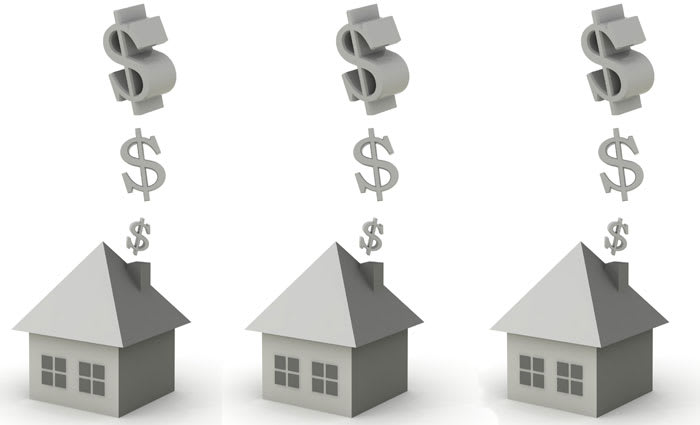How to boost your rental yield
Before reading this article, it’s crucial that you understand what your rental yield actually is, and therefore the two dynamics that impact upon it.
These include (for gross rental yield): the price, and the amount of rent coming in, and (for net rental yield) your expenses. It's also worth knowing the uses of the rental yield.
Firstly, those in areas where rental demand is heading down will likely want to focus more on tenant retention and keeping a close eye on the market, including the vacancy rate. For those in stable areas who think their properties may be able to perform more strongly, there are certainly opportunities.
GETTING IN FOR A LOWER PRICE
We will touch on this point briefly. Over the years, Property Observer has covered many articles about negotiating more effectively, looking for undervalued properties and bidding strategically at auction. If you already own a property, short of selling the investment and absorbing the in/out costs, there’s very little you can do here.
When purchasing an investment property you also want to be aware of the potential up and coming maintenance on the home - this can strongly affect your overall cashflow position as you may end up regularly paying out for repairs and replacements.
If you are, however, looking to buy an investment property, then it’s worth playing with the rental yield equation to note the sizable effect that saving $10,000 on the asking price can have on your overall rental yield, and therefore cash flow situation. Keep this in mind when purchasing.
INCREASING THE RENT
Firstly, to remain competitive, you must not increase the rent beyond what the tenancy market deems acceptable in an area. Your property manager should be able to assist you in keeping your rent at the correct level for the market – and if you are lagging behind, then this is the first area to target to increase the yield.
However, there are reasons why you can increase the rent beyond natural increases in the market. For instance, you could consider one of the following:
- Improvements
A renovation or partial renovation, addition of an air conditioning unit or other outlay can be worthwhile to a tenant. They may be willing to pay more for this change.
It’s worth getting your property manager to speak to your tenant, as well as doing a quick search as to the difference between your property and that asking a higher rental price.
Are there any areas that you can easily improve? Consider adding bedrooms and bathrooms where possible for a potential uplift in rental return. - Adding another dwelling
For investors in certain areas, this will be more possible. Those with houses, particularly in outer suburban areas, could consider adding a separate dwelling – such as a granny flat – that can then be rented out separately. Of course, this comes with its own combination of difficulties – such as a reduction of rent on the main house and, potentially, a higher vacancy rate.
There can also be a hefty outlay to get a decent build. Here are some pros and cons of this strategy.Some swear by this strategy, while others remain sceptical. - Renting the property to multiple tenants
Another option is to consider renting the home to a number of properties, perhaps on a room-by-room basis. While this, again, can see higher turnover and higher levels of wear-and-tear, and arguably a lower-quality tenant, you may see it give you the rental yield uplift you desire. - Consider turning the property into a holiday rental
This is not going to be effective for all property owners, however those with a property in an appropriate holiday area with strong demand may find that the high returns available over the holiday period can push their yield up overall. - Furnishing the property
This is, again, not a strategy that suits every rental. However, in areas where there is demand for furnished properties, it may suit to deck-out the property yourself. Specific tenants, particularly in shorter-stay locations, are willing to pay a premium for the property to be ready for an immediate move in.
Some investors will find that a regular rental income trumps a higher rental yield overall, but a less certain flow of tenants. This is particularly the case if you have good tenants that you want to keep. What have you done to increase the rent, and how effective has this been?
MINIMISING EXPENSES
Lastly, it’s down to minimising expenses. If you do not already know what all the ingoings and outgoings are for each of your investment properties, then you need to do some substantial paperwork to get on track.
Now it’s worth crunching the numbers – are there any areas that you could be saving yourself money with? What is affecting your net rental yield unfavourably? These can be factors that you will not be able to reduce – for instance, property management fees might not be negotiable and you may not want to consider self-managing. However, there are often other costs that you can reduce. For instance, over the past few years of ownership you may have befriended a plumber. Could that plumber offer you a better deal for future repairs? These small changes can help assist with your bottom line.
You might also find that other expenses affecting your rental yield include high interest rates or charges on a loan you haven’t recently assessed. Visit your broker for a loan health check.
YOU MIGHT WANT TO READ
The top suburbs for unit rental yield around the country
Margaret Lomas' How to boost cash flow using your investment property
